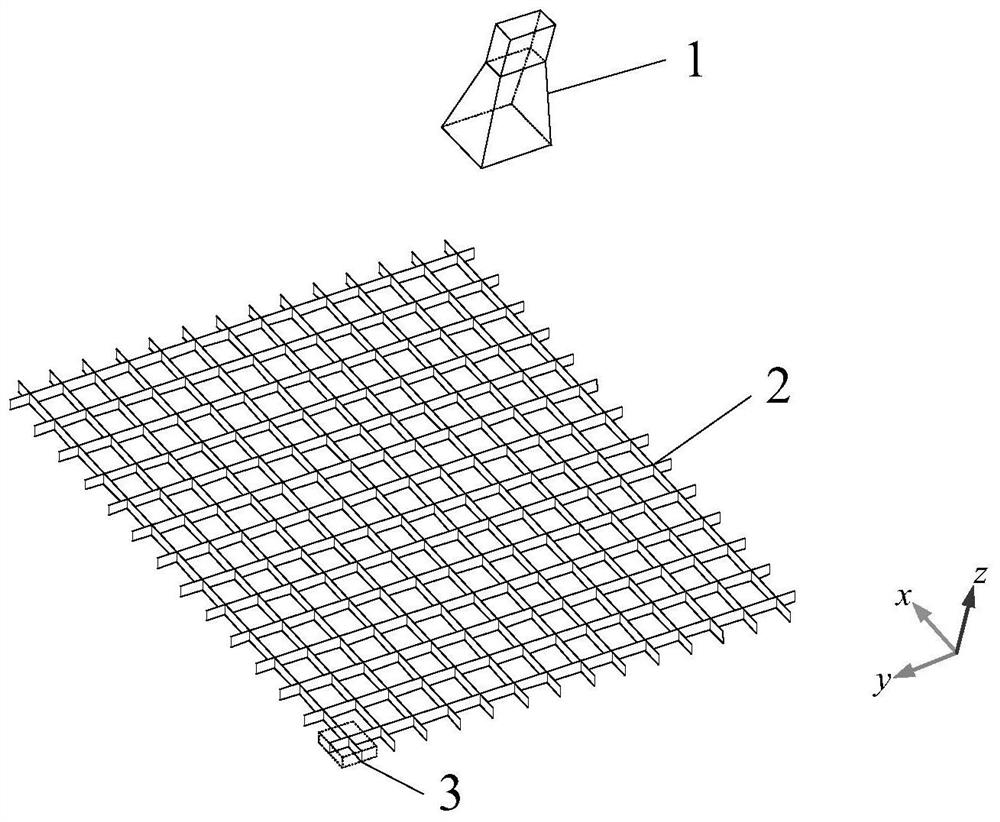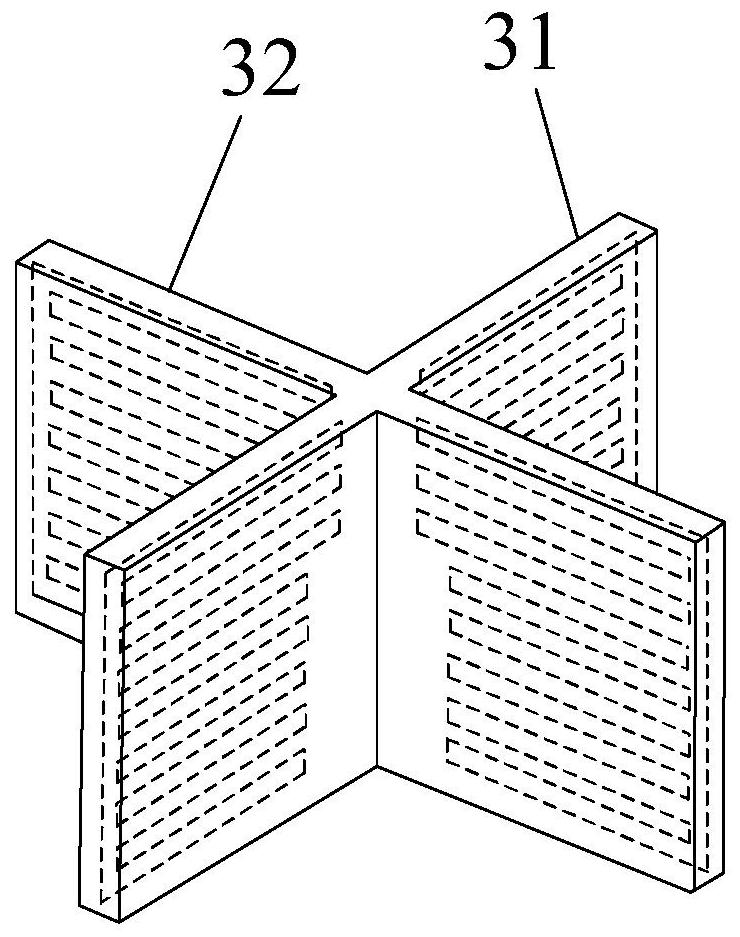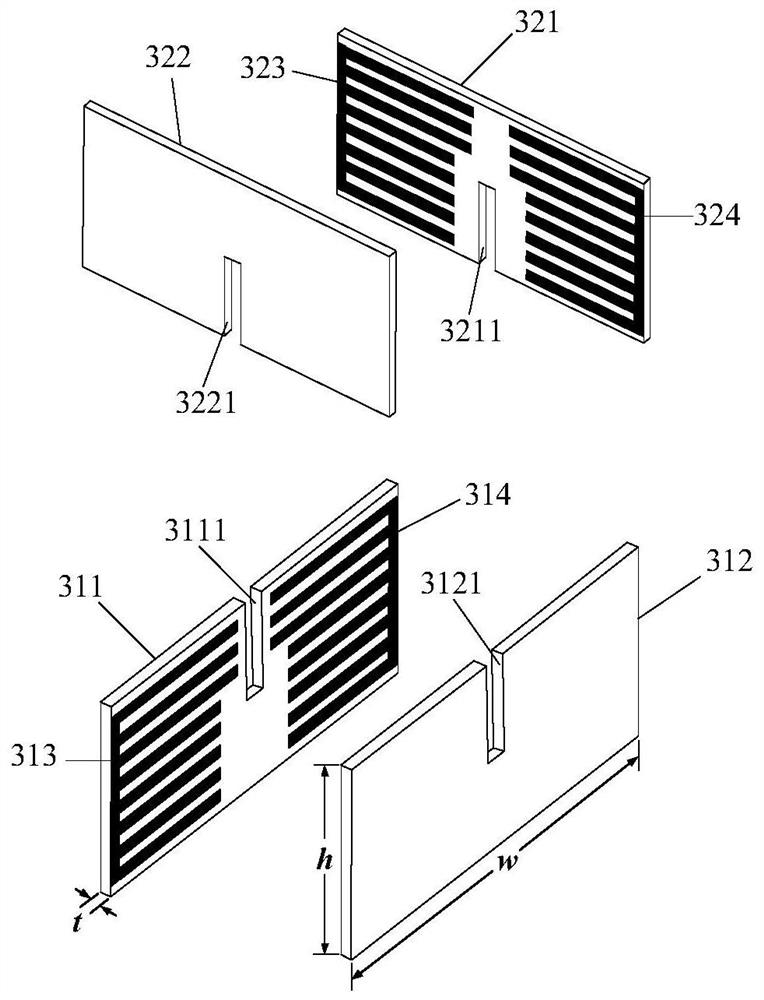Low Radar Cross Section Reflectarray Antenna Based on Artificial Surface Plasmons
A technology of artificial surface plasmon and radar scattering cross-section, which is applied in the direction of antennas and electrical components, can solve the problems of limited frequency band range and angular range, affecting antenna radiation performance, and large radar scattering cross-section, so as to achieve high wave transmission efficiency, Effect of low radar cross section and guaranteed radiation efficiency
- Summary
- Abstract
- Description
- Claims
- Application Information
AI Technical Summary
Problems solved by technology
Method used
Image
Examples
Embodiment 1
[0036] This embodiment includes a feed 1 and a reflection front 2, wherein the beamwidth of the feed 1 is 40°, the reflection front 2 is located directly below the feed 1, and the distance between the reflection front 2 and the phase center of the feed 1 is f is 165.0 mm, and the reflection front 2 is composed of 14×14 reflection units 3 with the same structure and different parameters. Each reflection unit 3 is composed of a first laminated dielectric plate 31 and a second laminated dielectric plate 32 crossed to form a three-dimensional artificial surface plasmon structure, such as figure 2 shown.
[0037]The reflection phase of each reflection unit 3 in the reflection front 2 is determined by the following formula:
[0038]
[0039] Among them, φ i is the reflection phase of the i-th reflection unit 3, where the value of i is from 1 to 14×14, the working wavelength λ in free space is 30.0mm, R i is the distance from the phase center of the feed 1 to the center of the...
Embodiment 2
[0050] The structure of this embodiment is the same as that of Embodiment 1, only the following parameters have been adjusted: the beam width of the feed source 1 is 35°, the distance f from the phase center of the feed source 1 to the reflection front 2 is 188.0mm, and the upper metal The width of the three metal patches of the branch 3131 and the width b of the five metal patches of the lower metal branch 3132 are both 0.7mm, the distance between the three metal patches of the upper metal branch 3131 and the five metal patches of the lower metal branch 3132 The distance between the patches and the distance g between the upper metal branch 3131 and the lower metal branch 3132 are all 0.7mm, the width b and height 8×b+7×g of the metal branch 3133 are 0.7mm and 10.5mm respectively, and the first dielectric substrate 311. The heights h of the second dielectric substrate 312, the third dielectric substrate 321, and the fourth dielectric substrate 322 are all 11.2 mm, the first upp...
Embodiment 3
[0053] The structure and parameters of this embodiment are the same as those of Embodiment 1, except that a metal plate with a size of 238 mm×238 mm is added below the reflection front 2 of Embodiment 1, and the metal plate is close to the reflection front 2 .
PUM
 Login to View More
Login to View More Abstract
Description
Claims
Application Information
 Login to View More
Login to View More - R&D
- Intellectual Property
- Life Sciences
- Materials
- Tech Scout
- Unparalleled Data Quality
- Higher Quality Content
- 60% Fewer Hallucinations
Browse by: Latest US Patents, China's latest patents, Technical Efficacy Thesaurus, Application Domain, Technology Topic, Popular Technical Reports.
© 2025 PatSnap. All rights reserved.Legal|Privacy policy|Modern Slavery Act Transparency Statement|Sitemap|About US| Contact US: help@patsnap.com



